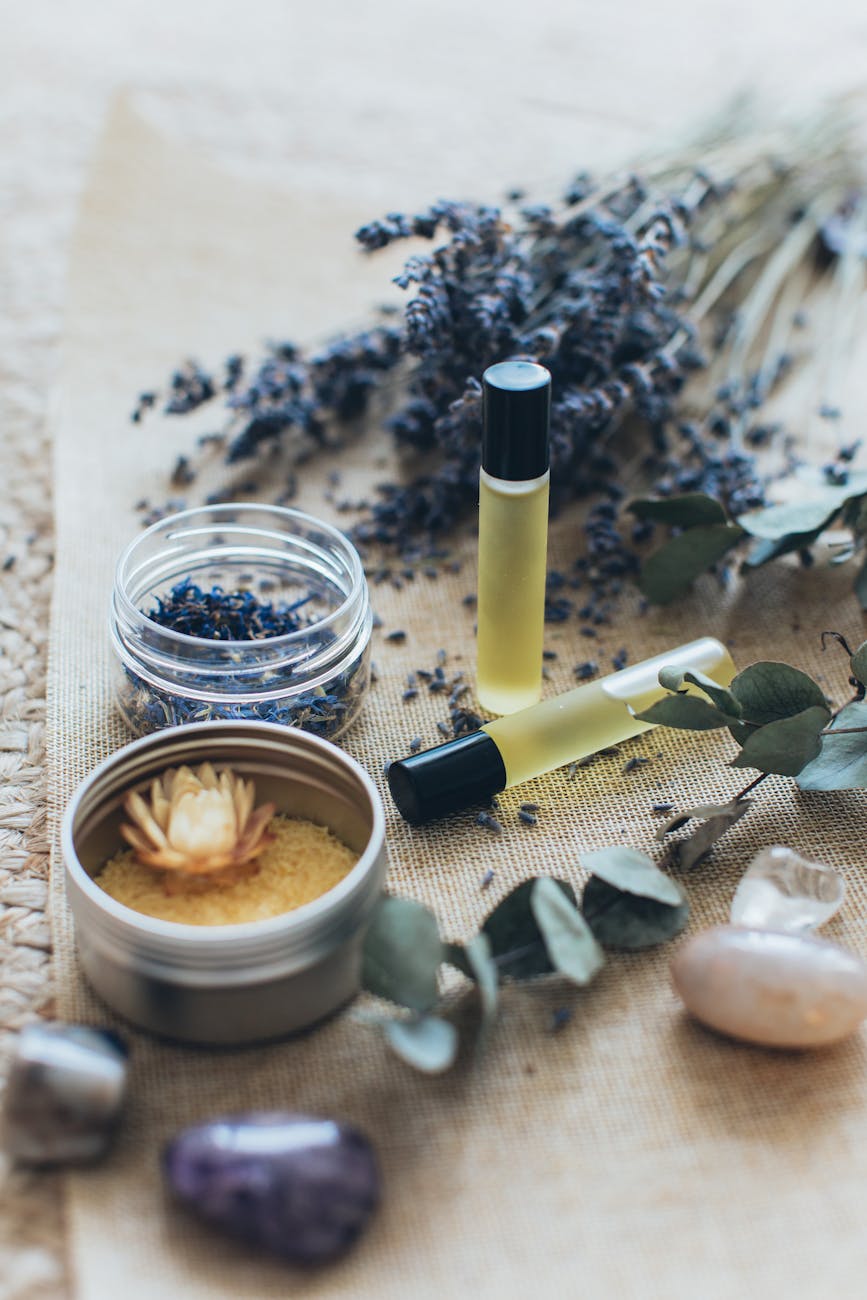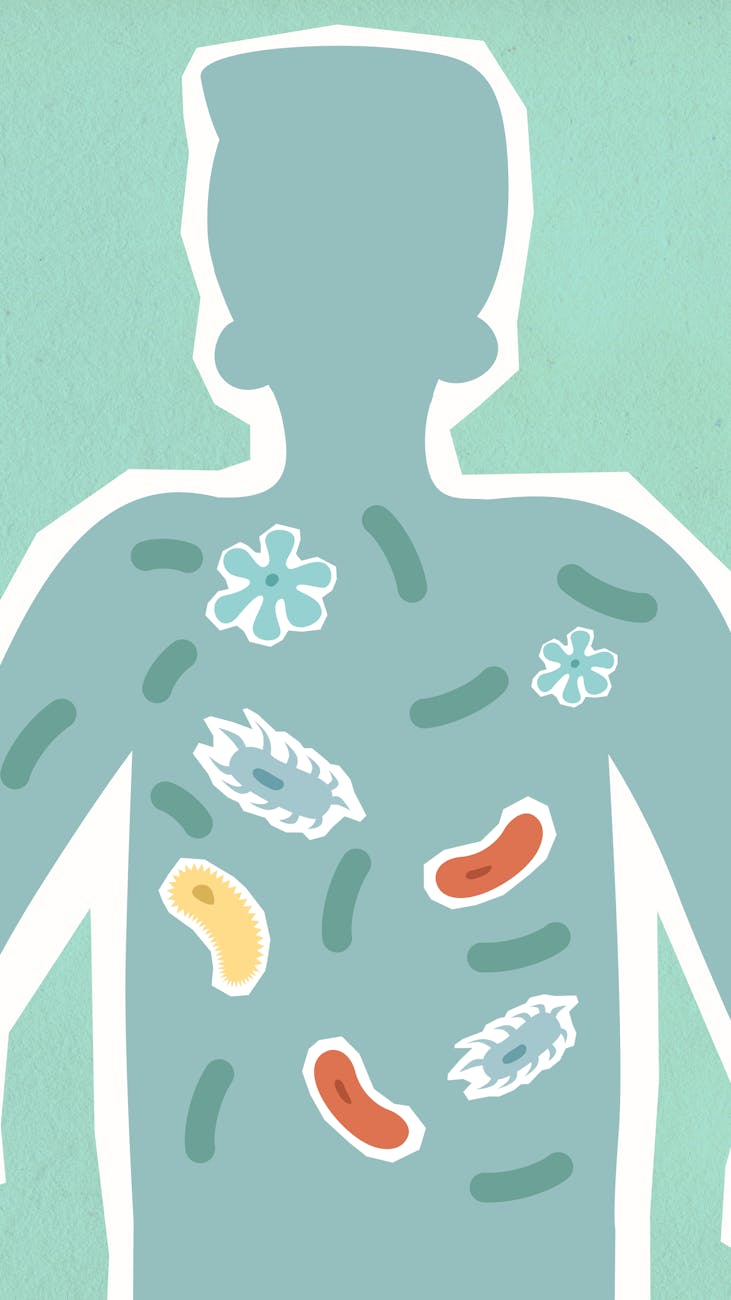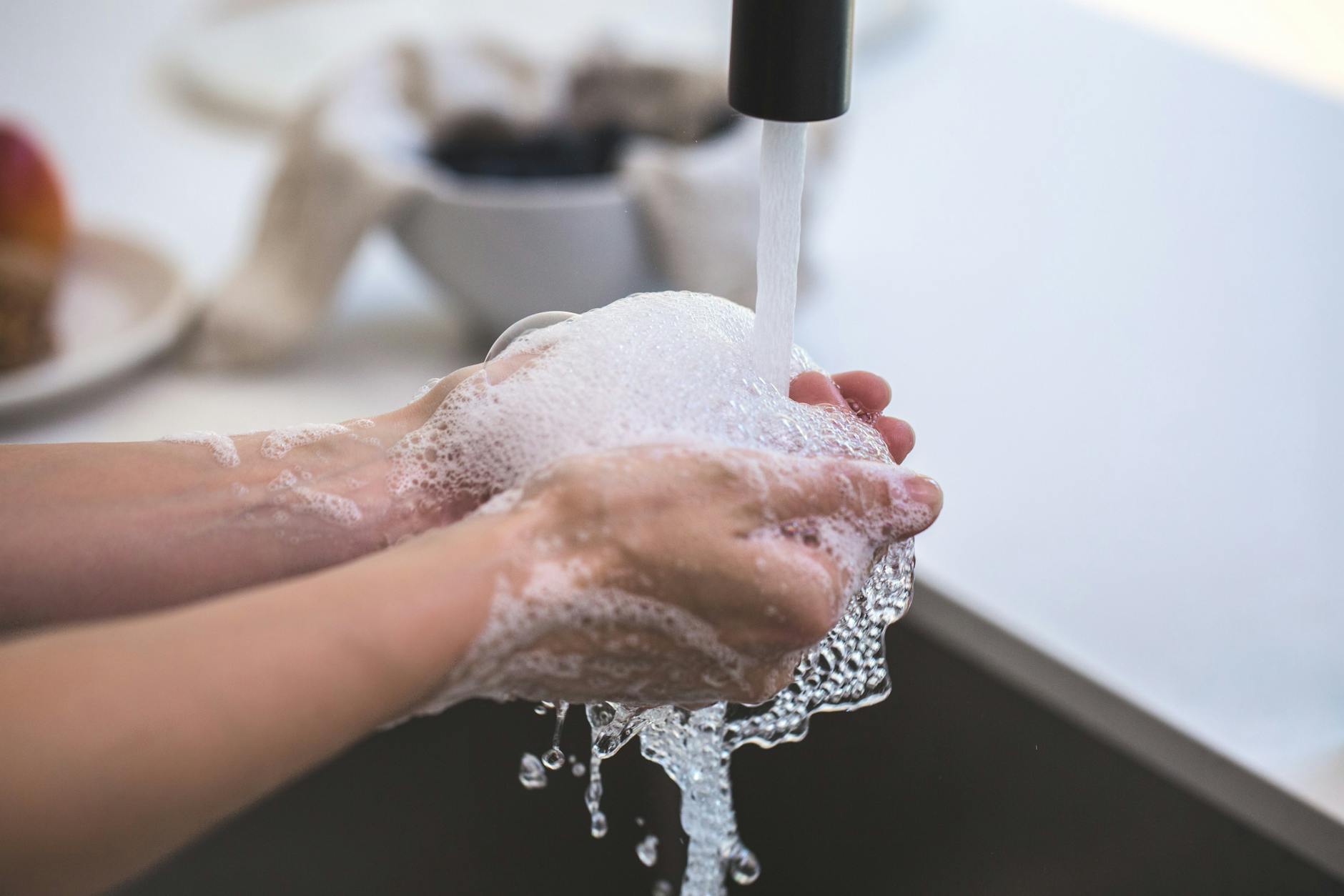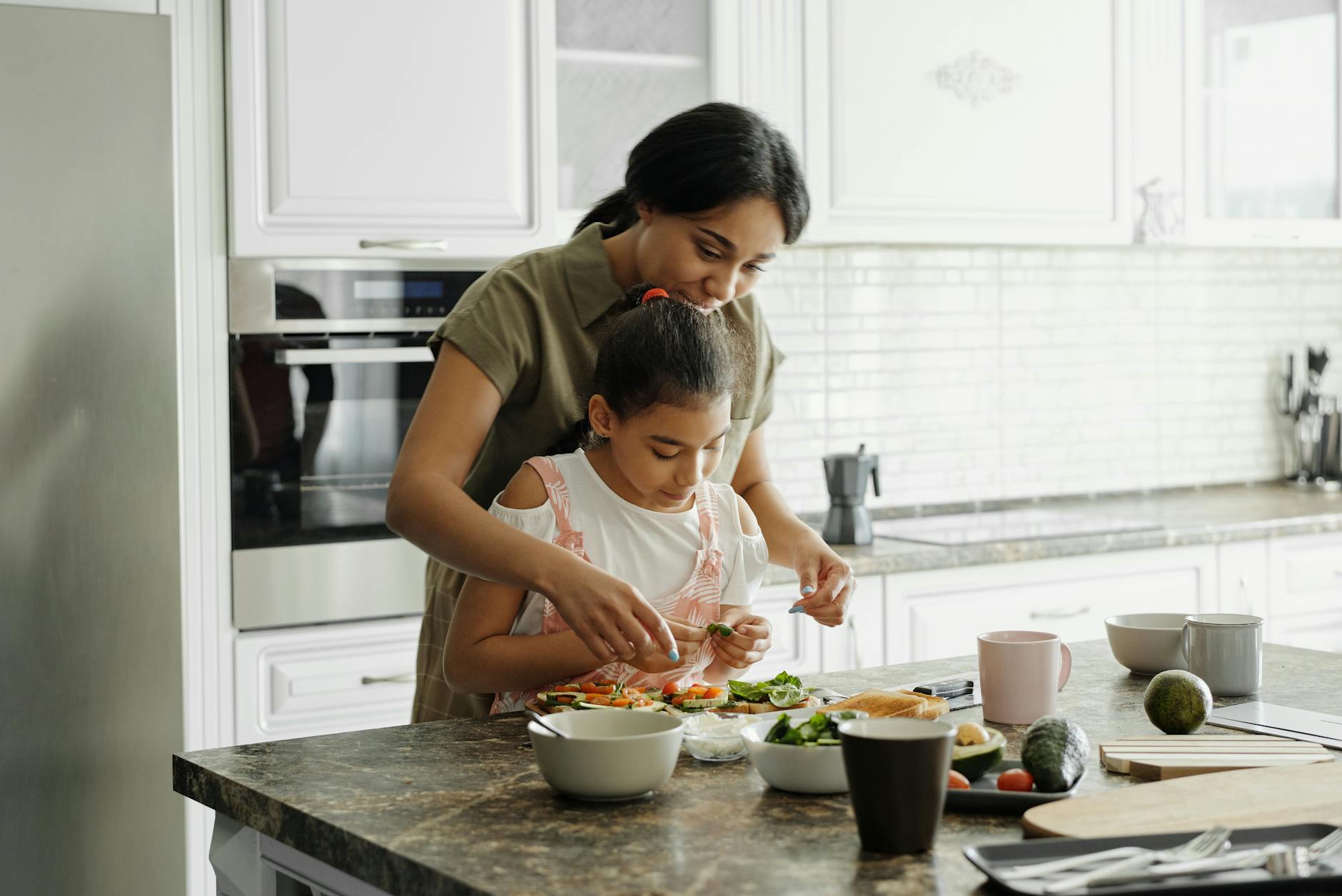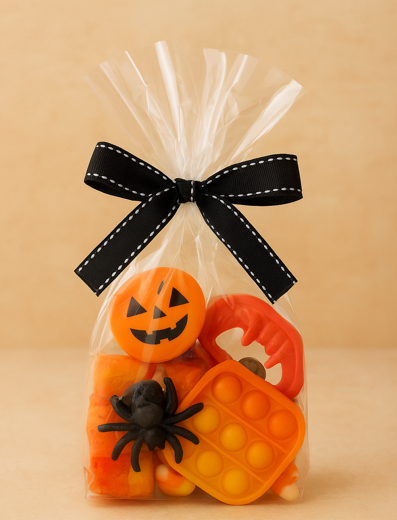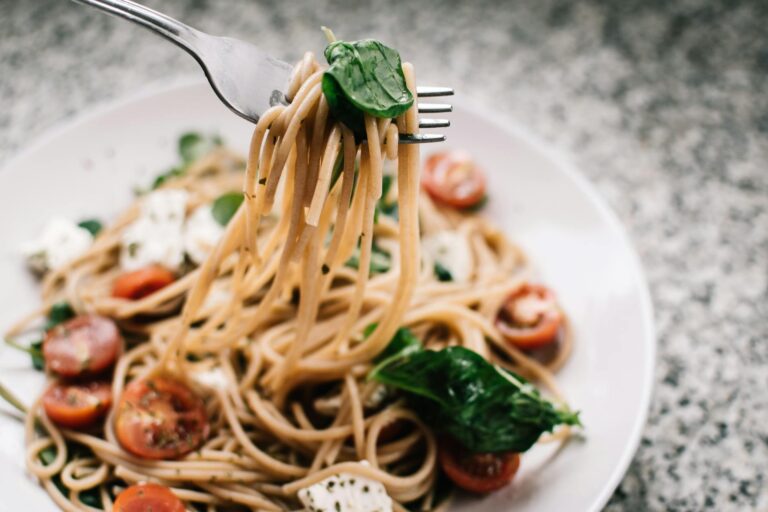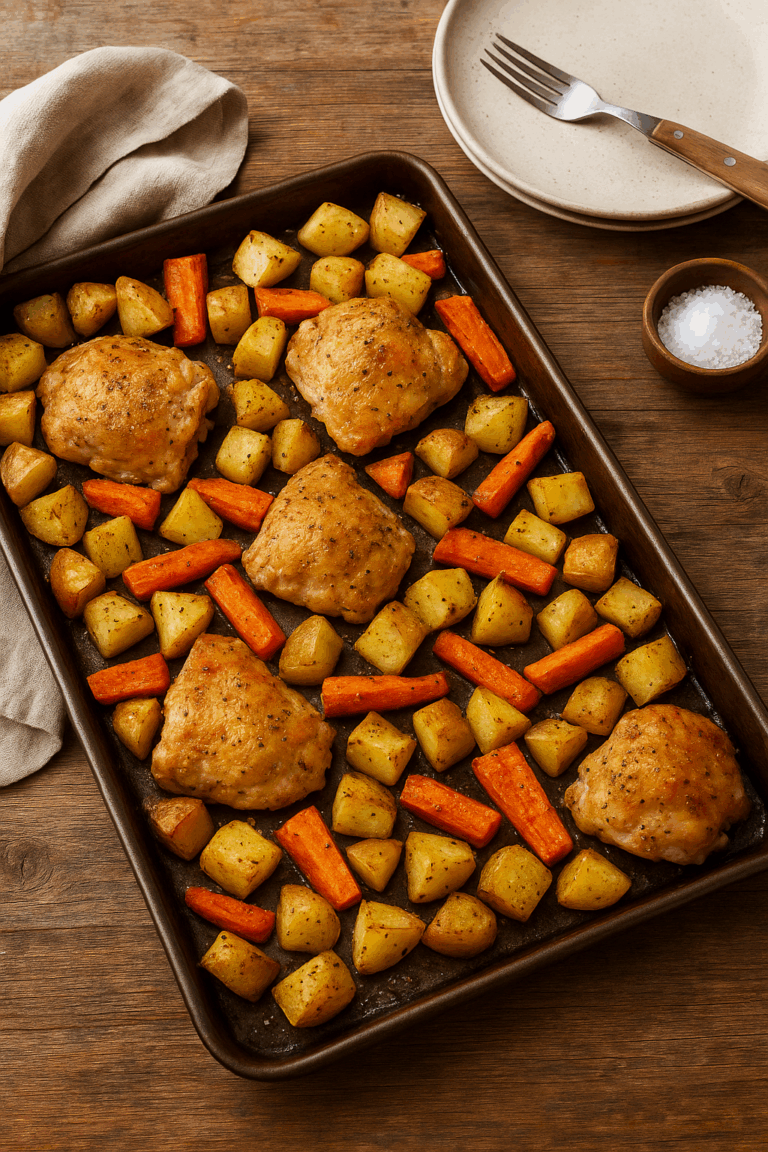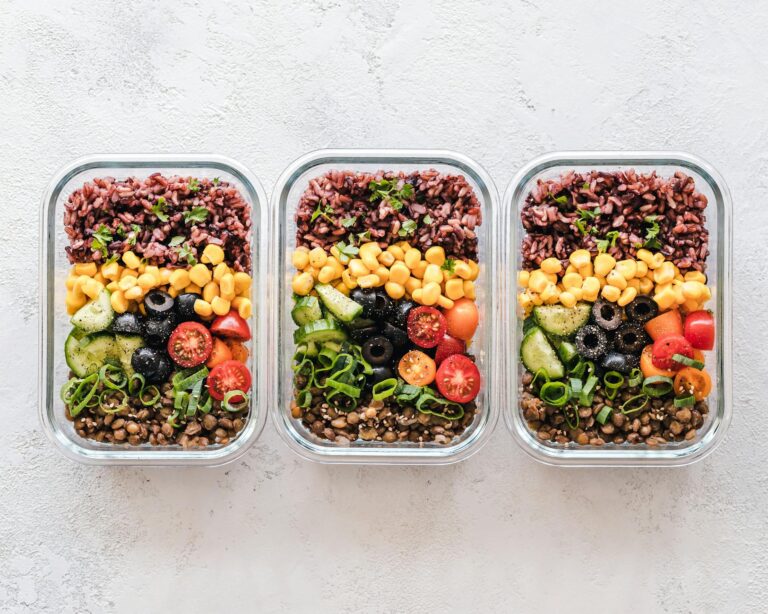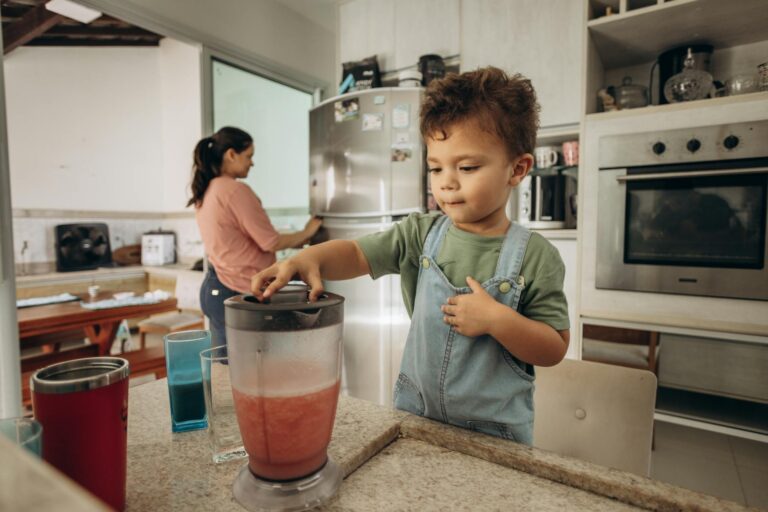This post contains affiliate links.
A First-Time Mom’s Guide to Fall Immunity
The first fall I encountered as a new mom was when my baby was a newborn. I was full of paranoia about how to keep my little guy safe and healthy. I have a background in nutrition and some knowledge about microbiology from college. That didn’t seem like much when my skills were put to the test on the most important person in my life. As an exercise physiologist and health coach, I knew the science behind immunity, but applying it to real life with a tight budget and food allergies requires some finesse. We isolated a lot and managed health risks the best we could, as we all do, but with a one year old, this fall will bring new challenges! So… I have researched all of the immune boosters for kids so we can keep our kiddos safe and healthy! No need to pump their bodies full of synthetic ingredients when we can build their immune system with kitchen ingredients and maybe some carefully utilized supplements. There is nothing sadder than a sick kiddo, so this season I am going to help you focus on prevention and give our kiddos the best!
Why Kids Need Extra Immune Support This Fall
The Science Behind Children’s Developing Immune Systems
Kids are the most resilient people I know. They fall, they get back up. They’re sick they heal quickly. This is true for their moral resolve as well as their body’s capabilities. The body is very resilient but it takes time for their immune system to fully mature and perform at maximum capacity.
For example, you might have a 5 year old who has had the flu once, but her body isn’t great at building long term protections and remembering that that specific virus. So, she could still get sick again. Whereas an adult has great memory capabilities in their immune systems and would easily ward off infection. Kid’s bodies, especially babies have not even had the chance to be exposed to many diseases. That’s where mom’s breastmilk and vaccines come in handy. The antibodies in mom’s breastmilk help the body fend off diseases even though the child may not have any of their own to help their body out. Vaccines are also a way to teach the body what is bad so it can practice fighting off a disease or infection that can be very deadly to our children before they are exposed to the real deal.
All in all, their little bodies need some extra support. An extra boost is especially important during fall i.e. flu season and back to school time. They are around a whole bunch of other kids which just increase the amount of germs they can and will be exposed to. That’s why it a great time to focus on the foundational principle that can help keep our little ones healthy.
Kids vs. Adults: How Immune Systems Differ
| Adults’ Immune Systems | Adults’ Immune Systems |
|---|---|
| Stop germs early in the nose and throat | Often allow viruses to spread deeper before reacting |
| Have more “fresh” immune cells ready for new germs | Rely more on memory cells from past infections |
| Fast but less targeted defense (especially in babies) | Slower to respond but more specialized and effective |
| Babies borrow mom’s antibodies during pregnancy and breastfeeding | Rely only on their own immune memory |
| Still “in training,” building long-term protection | Fully developed, stronger memory from years of exposure |
Common Fall Health Challenges I’m Preparing For
The reality is my baby is more mobile, out and about much more which means MANY more germs to navigate this season. Another challenge that kids and adults face as seasons change is decreased sunlight exposure which means less Vitamin D. Vitamin D is really important to our bodies everyday functions. We end up spending a lot of time inside as it get colder which means less space to spread out and more opportunities to get infected by others. This one might not be a challenge for my taste buds but it will be for the rest of my body. It’s those delicious holiday treats that we are going to eat and make. Our sweet tooth and immune system don’t really agree. The last thing is ate night and early mornings. Those sleep disruptions can affect our immune health, which we’ll touch more on in a sec.
Natural Immune Boosters for Kids: Kitchen Medicine That Works
Now we’re all painfully aware of the microscopic friends that await us this season, let’s talk about ways to guard our bodies against them… At least the bad ones. These natural immune boosting ideas for kids can be done with things right in your kitchen.
Top 10 Evidence-Based Foods for Children’s Immunity
I spent an entire year of my life learning about how food affects our bodies. Along with what vitamins and minerals our bodies need and why. Yes, a whole year. There is clearly a lot to unpack, but to save you a year and a really long textbook, lets cut right to the chase. Below are some powerhouse foods that can help us and our kids immune systems out this season. This is not truly a comprehensive list. These are just some of the foods I thought would be easiest for kids and that would pack the biggest punch.
- Garlic: Contains natural compounds that boost white blood cell activity
- White blood cells are the really important guys that basically do all the heavy lifting when it comes to the immune system. Specifically in kids, these cells are still in training so giving them an extra boost can be very beneficial.
- Raw honey (12+ months): Natural antimicrobial properties
- This delicious gift from our friends, the bees, is not just sweet. It has properties that kill and repel our microscopic friends. Remember that honey is only safe for kiddos 12 months and older due to the risk of botulism.
- Citrus fruits: Bioavailable vitamin C for immune cell function
- Citrus fruits ranges from lemons to grapefruit to oranges. These provide a ton of vitamin C that is in a form that our body can use easily and efficiently. Fun fact, consuming vitamin C with a food high in iron can help increase the amount of iron your body can absorb.
- Sweet potatoes: Beta-carotene for respiratory health
- Sweet potatoes are in my opinion the most versatile vegetable. I can be eating it with a steak on minute and the next inside a delicious dessert. These orange vegetables are back with an element called beta-carotene and that supports respiratory health. I love sweet potatoes, but any orange vegetable can fit the bill here.
- Greek yogurt: Probiotics for gut immunity development
- Any type of yogurt is going to do the job for you. Greek yogurt is extra high in protein compared to normal yogurt, so whatever you like more! Yogurt is full of probiotics. Probiotics are good bacteria that take up space in our gut so there is no room for the bad ones to stow away. Eating some tangy yogurt can support your little ones health in a lot of delicious ways.
- Spinach: Folate and antioxidants for cellular repair
- Spinach is my favorite leafy green and lucky for me, my little one likes it sauteed and served up. This leafy goodness is full of things that protect every cell in our body from destructive damage. Antioxidants are import to ward off things called free radicals that are just looking to tear our bodies apart cell by cell. So thank goodness for spinach.
- Berries: Anthocyanins that fight inflammation
- Anthocyanins are the things that make the berries the deep purple-redish color. They help fight off any excessive inflammation that doesn’t help with healing to make sure your body is working at tip top shape.
- Eggs: Complete protein and vitamin D absorption
- Eggs are packed full of protein and fat that keeps you feeling full. All the protein helps your body build the tools it needs to fight off germs. Not to mention the yolk is filled with vitamin D which is hard to get anywhere but the sun, which is really important to immune function.
- Avocado: Healthy fats for nutrient absorption
- Watching my baby eat avocado brings me so much joy. Its one of his favorites. He eats it like it’s going to run away from him. Luckily for us it doesn’t just taste good, but also helps your body absorb some vitamins that are really important to cell health like vitamin E.
- Bone broth: Amino acids and minerals for immune support
- Bone broth is like drinking straight protein. It is packed with the building blocks to everything that our body is made of, amino acids! Another thing it does for us is strengthen the gut lining with all of the collagen that it has!
Check out these 15 recipes that make it easy for your family to eat these foods!
Age-Appropriate Immune Boosting Strategies
At every stage there are different things we can do to teach and support our kids to be healthy and safe from infection. We save on medical bills and get more sleep, because there is less tending to sick kids at night! Here are some simple things you can do for each age group to help them eat those immune supporting food!
| 6-12 months: Breast milk, first foods, and immune-building basics |
| 1-3 years: Transitioning to family foods and building variety |
| 4-8 years: School-age immune challenges and solutions |
| 9+ years: Teaching kids to make their own healthy choices |
The Gut-Immunity Connection Every Parent Should Know
Gut health was mentioned briefly earlier, but it’s something that is really important in our first line of defense. A couple of years ago I got some really bad infections in my gut and it took a real toll on my life. I wasn’t able to work and eating anything was just painful. I took a lot of drugs to kill the bacteria but that left me with something just as bad, a destroyed microbiome. I eventually found a great doctor who helped me heal my gut and I found out about my food allergies. I am allergic to gluten, dairy, tomato, and a bunch of other things we don’t need to get into. Moral of the story, after years of doctors not knowing what was wrong, healing my gut and eating the right things literally changed my life.
Taking care of our gut and our kids’ gut will aid in their fight against germs this season. Gut health could also help with things like colic or frequent unknown tummy aches.
Our gut (i.e. our small intestine) is one way that germs can infect us. Our gut is colonized with an innumerable amount of bacteria. They aren’t harmful, they are actually a protection for us. When bad bacteria gets into our body, if our gut bacteria is off or not healthy/plentiful then the bad bacteria can find a spot to stick and to grow. Then we get sick.
(Source: Impact of the Microbiome on the Immune System – PMC)
So keeping our healthy gut bacteria HEALTHY and ABUNDANT is super important. These little guys are also important for digestion and general gut happiness. If and when our gut needs some help getting good bacteria we take or eat probiotics. Probiotics = good bacteria.
There are 2 ways to get probiotics: through food we eat or supplements. Honestly, I find supplements easier to do with my allergies, but fermented products like yogurt, kefir and kimchi are much cheaper and add flavor along with variety to you and your child’s diet. When I was on my gut healing journey I make it a point to do both, because enough is never enough. So it really is up to preference, what your kids will eat and your budget.
My favorite brands are Physician’s Choice and Culturelle. Those are the amount of bacteria per capsule (CFU) that my doctor recommended and I find those brands they are high quality for a good price. Not all supplements are created the same.
For my baby they have helped with general fussiness, constipation relief and consistent bowel movements. We started him on them at 7 months, since that’s when problems really arose. It’s never to early to help your kiddos gut, especially when it’s on the front line of the immune system. Of course, always ask a trusted pediatrician or doctor before you start taking any supplements.
Lifestyle Factors That Boost Kid’s Immunity
Sleep: The Foundation I Learned to Prioritize
Sleep is crucial for every single bodily function at every single age. It is especially important for keeping our immune system at it’s best. Sleep helps our bodies heal and recharge. Without sleep, our immune systems won’t be able to work at full capacity and will have limited strength compared to someone who gets enough sleep.
Let me preface this by saying, I know how hard it is to get sleep and keep our kiddos asleep. Sleep has been a battle with my baby since he was born. He has a lot of wake ups at night, but thankfully he takes a decent amount of naps. As mothers and caregivers we have to just do our best and encourage our children to get the rest that they need. Currently, in my home we practice co-sleeping which has been really beneficial for me, dad, and baby. It’s a bit controversial but changed my life.
Each child is different but here are the sleep recommendations by age:
Infants (4-11 months): 12-15 hours per day
Toddlers (1-2 years): 11-14 hours per day
Preschoolers (3-5 years): 10-13 hours per day
School-age children (6-13 years): 9-11 hours per night
Teenagers (14-17 years): 8-10 hours per night
Trust that your kiddo’s body knows how and when it needs to sleep. We can encourage sleep by helping create routines and healthy sleep hygiene. Check out this post for some relaxing bedtime routines and tips for all ages!
Hand Hygiene: THE ULTIMATE IMMUNE BOOSTER
This topic is probably one that I am most passionate about. After taking a frightening, eye opening and amazing course during my undergrad on microbiology, I will never underestimate how important a good handwashing is.
What we don’t usually hear is that washing you hands is the #1 thing, the NUMBER ONE THING you can do to prevent illness. The CDC tells us that washing our hands reduces the risk of getting a diarrhea-related illness by 30% and a respiratory infection by 20%. The germs have to get into our bodies somehow and it usually from things we touch. Of course you can see how this fact would make sense since kids get sick alot. They would get sick much less if they washed their hand properly and frequently.
When I had a newborn, of course, we washed our hands religiously. We were washing after we touched almost anything. We never got sick that winter, no matter how many visitors we had who had just traveled on a plane. We usually get sick at least 3 times a year during the fall/winter season, not once. I attribute it to our excessive handwashing.
Washing our hands is more than a quick rinse and NOTHING can replace it. Soap and water are the most effective germ removers on this earth. Proper hand washing should last for about a minute and a good scrubbing should take place. The palms of our hands, under our fingernails, between our fingers, the back of our hands and so forth would be scrubbed. But…. I don’t know about your kids but mine is going to let me do that. So we try our best.
Try to get your kids to wash their hands for about 20 seconds, sing a song that’s 20 seconds, like a nursery rhyme or the ABC’s slowly! We can model and teach how to wash their whole hands as we do it more frequently. Some incentives would be cool colored soap, a special smelling soap, or some sort of reward for X number of handwashes.
When we can’t wash our hands, hand sanitizer is the next best thing. Hand sanitizer just kills most of the germs that are on our hands and then their corpses, for lack of better words, are stuck to us till they fall or get washed off. So it is effective but notice the word MOST. Only most germs, that’s why it says 99.9% of germs get kills. Handwashing takes off ALL the germs from you hands leaving NOTHING behind. Both are effective but the actual washing is best.
Check out this video from the WHO about how to wash your hands properly!
(Source: Handwashing Facts | Clean Hands | CDC)
Fresh Air and Movement for Stronger Immunity
So if you’ve read any other of my blog posts, I almost always mention exercise. It’s because it is literally the cure all, the prevent all. That’s why I got my degree in exercise, it is a wonderful and powerful thing. Some cancer clinics use exercise alongside chemo to get rid of the cancer and the outcomes are significantly better than just chemo alone. If you want to fix just about anything about your health, exercise. (If you’d like to learn about how you and your family can exercise more in simple ways, click here).
For our immune health exercise basically gives it a power boost. The cells that stop the germs from infecting us work faster and better when we exercise. We can mount a bigger response to the germs in our bodies than we otherwise could. We heal faster. We reduce our inflammation. So, lets move.
It’s best to encourage your kids to do it because it’s fun and its also just a way for them to play. Having fun is better than being forced. Here are some great age based and mama based exercise ideas for your fall season!
With Baby (0-12 months)
- Stroller walks or hikes
- Baby-wearing workouts – squats, lunges, and walking while baby naps in carrier
- Dancing while holding or bouncing baby
- Mall walking when weather is bad
- Mommy-and-me fitness classes
- Indoor walking up and down stairs
- Stretching and light exercises while baby does tummy time
During Nap Times (15-45 minutes)
- Quick YouTube fitness videos (yoga, Pilates, HIIT)
- Indoor strength training with resistance bands or light weights
- Stationary bike or treadmill if you have one
- Online dance or aerobics classes
- Bodyweight exercises (push-ups, planks, squats)
Ages 3-5 (Preschoolers)
- Leaf pile jumping and rolling
- Animal walks (bear crawls, frog hops, crab walks) in the yard
- Dancing to music indoors
- Simple obstacle courses using pillows and furniture
- Playing “freeze dance” or “red light, green light”
Ages 6-8 (Early Elementary)
- Raking leaves into piles for jumping
- Nature scavenger hunts with lots of walking
- Indoor yoga or stretching videos
- Building snowmen and snow forts
- Sledding and snow hiking
- Jump rope indoors or in the garage
Ages 9-12 (Late Elementary)
- Ice skating or roller skating
- Winter hiking or nature walks
- Indoor rock climbing or climbing walls
- Basketball shooting practice in the garage
- Snowshoeing
- Indoor martial arts or karate videos
- Cross-country skiing
Ages 13+
- Downhill or cross-country skiing
- Ice hockey or pond hockey
- Indoor fitness challenges and strength training
- Winter running with proper gear
- Snowboarding
- Indoor swimming at community centers
- Joining winter sports teams at school
Stress Management for the Whole Family
Stress management is important for everyone. When one parent or person is stressed the whole family feels it. Stress is the destroyer of all things good. It tears up our immune system and shuts it down. So we really want to avoid stress as much as possible and manage it when it comes around.
As a new mom stress can take the form of anxiety which is equally bad for one’s immune health. It is so important to rest when you can and do things that you enjoy! Make sure you make some time for things you like to do and that relax you even if that means you get a baby sitting or some support from someone you love. Baby needs you to be at your best. Caring for yourself helps you care for your baby. Not to mention that taking care of a young children while being sick is WAY much more work or inconvenient than taking 30 minutes to yourself.
Your Family’s Immune Support Journey Starts in Your Kitchen
As a mom and wellness coach who’s navigating this journey alongside you, I want you to walk away from this post feeling empowered, not overwhelmed. Supporting your child’s developing immune system doesn’t require perfection, it requires consistency with simple, science-backed strategies.
Start here if you’re feeling overwhelmed: Choose one immune-boosting food from our top 10 list to add to your weekly grocery routine. Maybe it’s switching to Greek yogurt for breakfast or adding spinach to smoothies. Small, consistent changes build stronger immune systems than dramatic overhauls that don’t stick.
Remember gut health: Since most of your child’s immune system lives in their gut, focusing on gut-friendly foods like yogurt, bone broth, and fiber-rich fruits makes the biggest impact. You don’t need expensive probiotics when your kitchen already contains the building blocks for healthy gut bacteria.
Age-appropriate expectations matter: Your toddler’s immune system is still learning, and that’s exactly how it’s supposed to work. Our job isn’t to prevent every sniffle, it’s to give their developing systems the nutritional foundation they need.
The reality check: Our kids will still get sick sometimes, and when they do, their well-nourished body will be better equipped to fight off infections and recover faster. The immune-supporting foods I mentioned work as prevention and recovery support.
What I’ve learned as a first-time mom: The most powerful immune boosters are often the simplest ones. Garlic in your pasta sauce, citrus fruits as snacks, sweet potatoes as sides – these everyday foods contain more immune-supporting compounds than most expensive supplements.
Your next step: Pick one strategy from each section that feels manageable for your family right now. Maybe it’s adding berries to breakfast, understanding your child’s sleep needs, or incorporating more gut-friendly foods into meals. Build on these foundations as they become habits.
I’d love to hear which immune-boosting food your family decides to try first. Drop a comment below sharing your choice, and if this post gave you confidence in supporting your child’s immune system naturally, share it with another parent who could use these science-backed, kitchen-based strategies.
Remember: consistent small steps create stronger immune systems than perfect execution of complicated plans.
Ready for more inspiration like this?
Join our community of families who get exclusive tips, behind-the-scenes content, and actionable strategies delivered straight to their inbox every week. No fluff, just the good stuff you can actually use.
